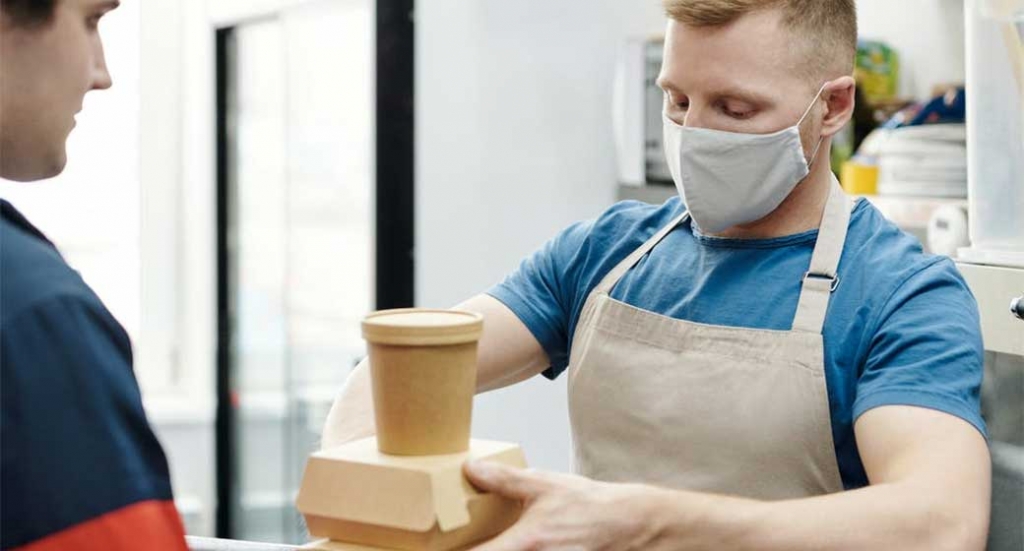The New Normal: Part of a new series of articles focused on restaurant recovery; issues, best practices, and process changes that will become part of everyday business going forward.
Masks of all types are becoming a central part of “The New Normal.” So, a disposable mask buying guide seems like a good place to start to help those in the restaurant industry separate fact from fiction and learn about best practices in selecting the right disposable mask.
Much like our Disposable Gloves Buying Guide, we want to provide enough information to allow you to make an informed decision about which mask to use and in what situations.
Table Of Contents
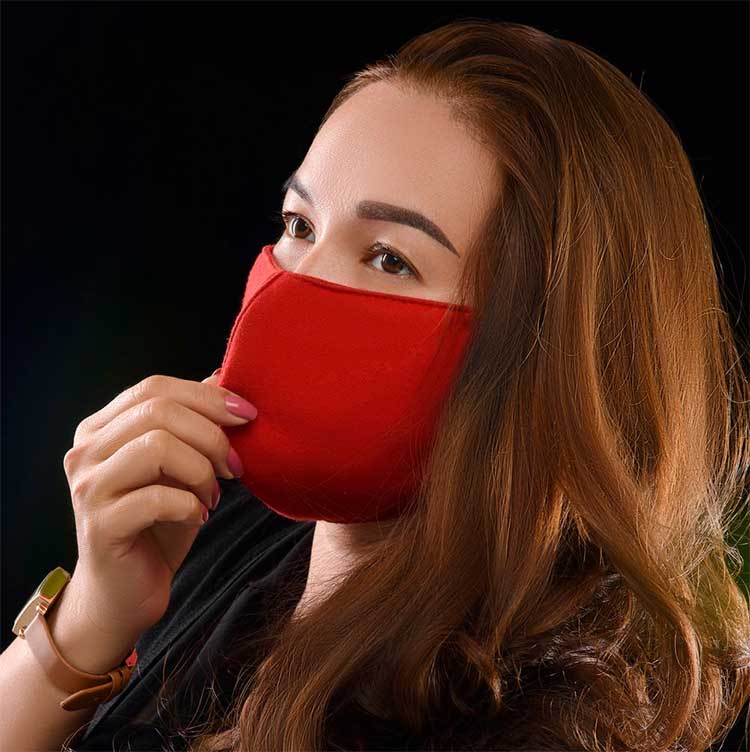
Disposable or Reusable?
The first big issue to tackle is that of reusability. Cloth masks are readily available and come in many different configurations. In addition, some cloth masks have pockets to insert removable filters that are purported to make the mask safer. Some are just simply strips of cloth designed to cover the mouth and nose. And if you have no other option, it is better to use a reusable, cloth mask rather than no mask at all.
However, reusable cloth masks may not be the best choice for foodservice workers for several reasons. First and foremost, if the worker or the establishment does not have strict guidelines for cleaning a reusable mask, they can quickly become a source of contamination. Reusing the same mask day after day without some sort of sanitation routine seems ill-advised.
Plus, what happens if your cloth mask becomes soiled or otherwise contaminated mid-shift? Will workers have a back-up mask to change into? These issues argue strongly in favor of using disposable masks.
So, while reusable cloth masks may be perfectly fine for personal use or in an office or retail setting, disposable masks are probably best for restaurant and foodservice workers. The one exception here is for respirators which can be reusable in some cases. More on that in a sec.
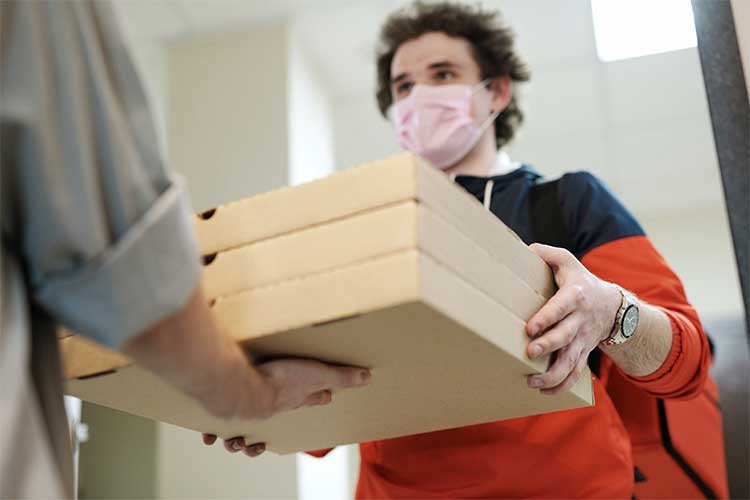
Disposable Masks Buying Guide
There are numerous types of disposable masks available. Different types of disposable masks have features that make them better suited for particular uses. The goal is to find the right type of mask for your particular situation. But to do that, we will need to explain what a mask is intended to do and how it is evaluated by various standards organizations.
What Masks are Intended to Do
This is one of the biggest issues that needs to be clarified. Many people think that wearing a mask will protect them from coming in contact with infectious agents. And that may indeed be true to some extent. However, for the general public and foodservice workers specifically, wearing a mask is intended to prevent airborne droplets from being released from the wearer of the mask. So rather than the mask protecting you from other people, a mask is actually protecting other people from you essentially.
To be fair, covering your mouth and nose should also reduce the possibility of airborne droplets coming into contact with your respiratory system. But to fully protect yourself in that way, you would need to use a respirator instead of a mask.
Masks vs. Respirators
Masks and respirators are often referred to interchangeably. But this is incorrect. As stated above, masks protect others from coming in contact with airborne droplets from the mask-wearer. Respirators, when worn correctly, can also prevent droplets and other particles from being inhaled by the mask-wearer.
Respirators are much more difficult to use correctly. There are several different types of respirators for different situations and face configurations. But all respirators have some things in common. For example, respirators need to be fit-tested to an individual’s face. They must form a complete seal around the mouth and nose so that all inhaled air is coming through the respirator’s filters and not from gaps around the edges.
Some respirators can also be cleaned, sanitized and reused. This varies by the type of respirator and you should follow the manufacturer’s guidelines for cleaning and sanitation (if applicable).
For foodservice, disposable surgical masks seem to make more sense. They are easier to apply correctly and are typically cheaper than a full respirator.
Here is a great video explainer on the differences between masks and respirators from OHSA:
How Masks are Rated
Masks are rated on 5 main performance metrics: Fluid Resistance, Breathability, Bacterial Filtration, Particulate Filtration, and Flammability. Based on the results, masks are rated on a 1-3 scale with 3 being the highest standard.
Here is a brief explanation of each of these metrics:
- Fluid Resistance: Masks are tested to see how they resist fluid penetration by basically shooting synthetic blood at the mask at several different (high) velocities. The mask is then visually inspected for blood penetration and the test is pass/fail.
- Breathability: Masks are tested for their resistance to airflow. Air is driven through the mask and the pressure is measured before and after. A lower breathing resistance indicates a better comfort level for the user.
- Bacterial Filtration: Staphylococcus aureus bacteria are used to measure the percentage of bacteria larger than 3 microns that are filtered by the mask.
- Particulate Filtration: Latex aerosol concentrations are used to measure the percentage of particles larger than 1 micron filtered out by the mask in a controlled airflow chamber.
- Flammability: Mask material is exposed to a flame and the time it takes for the flame to expand 5 inches up the material is measured. A “Class 1” rating means the material exhibits normal flammability and is acceptable for use in clothing.
Here is a chart of each of these metrics and the standards needed to achieve a Level 1, 2, or 3 rating:
| Performance Metrics | Level 1 | Level 2 | Level 3 |
|---|---|---|---|
| Fluid Resistance (ASTM F1862) | 80 mmHg | 120 mmHg | 160 mmHg |
| Breathability (MIL-M-36954 C: ΔP) | < 4 mm H2O | < 5 mm H2O | < 5 mm H2O |
| BFE Filtration 3μm (ASTM F2101) | ≥ 95% | ≥ 98% | ≥ 98% |
| PFE Filtration 1μm (ASTM F2299) | ≥ 95% @ 0.1 micron | ≥ 98% @ 0.1 micron | ≥ 98% @ 0.1 micron |
| Flammability (16 CFR Part 1610: Flame Spread) | Class 1 | Class 1 | Class 1 |
What Does This All Mean for Restaurant Workers?
When all factors are considered, a mask with an ASTM rating of Level 1 is probably sufficient for most foodservice applications.
Not all masks are ASTM rated so be aware of what you are purchasing ahead of time.
Our baseline recommendation for restaurant workers is a Level 1 surgical mask. These masks will prevent airborne droplets from being expelled by the mask wearer, they have a decent level of breathability, allowing them to be worn for extended periods, and they are disposable and easily changed out when needed. They are also more readily available and typically less expensive than higher-level masks or respirators.
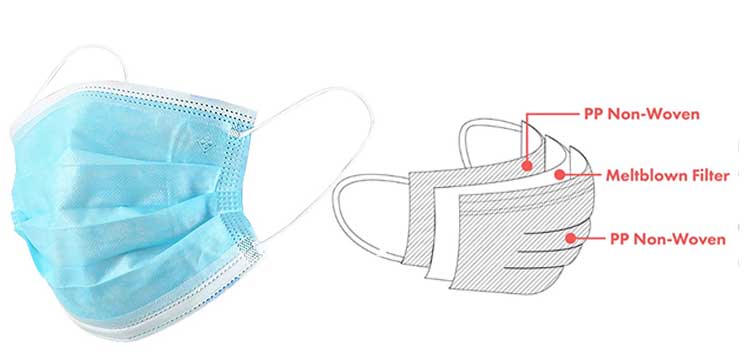
Shop All Personal Protective Equipment (PPE)
N95 vs KN95
There has been a lot of press focused on N95 respirator masks as these are often seen as the gold standard for masks. These respirators are often found in medical settings, because as we discussed above, they help to filter the air coming in as well as air coming from the mask-wearer.
Now, you may be seeing information on KN95 respirator masks. The names are similar so confusion is bound to happen. In short, N95 is the U.S. standard and KN95 is the Chinese standard. Both masks filter 95% of particles larger than 3 microns. The differences are in the details. KN95 mask standards require a fit test. While N95 masks do not, that is not to say that fit tests are not done in hospitals and other medical settings. They certainly are done. But they are not part of the N95 standard.
Also, N95 masks have higher standards of breathability which may make them more comfortable to wear for longer periods as breathing should be easier.
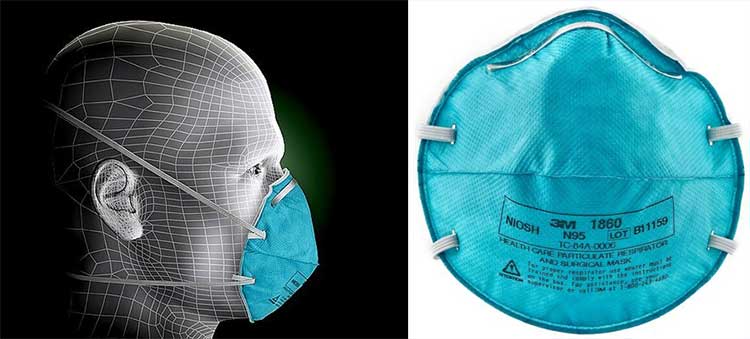
N95 Controversy
The N95 standard has some subtleties. N95 respirators can be used for many purposes. But while our attention has been focused on medical uses, there are other industrial uses that have different needs. For example, industrial uses may be more concerned with filtering particulates such as construction dust from entering the mask from the outside. But in that same usage, there may be little concern with filtering the mask wearer’s breath coming out of the mask.
In fact, some N95 respirator masks have a small vent on them that is intended to channel the wearer’s breath out through them. Since the prevention of COVID-19 is dependent on limiting airborne droplets that are exhaled, these types of masks could actually be worse.
This has become a big enough issue that two states (California and Colorado) have banned these vented respirator masks in some localities.
Still seeing a lot of these masks out there, it's confusing, because they are called N95- but the ones with the **valves** or openings on the front are NOT safe, and may actually propel your germs further!! @SFFDPIO @SFPD @sfgov @LondonBreed @MyrPressOffice https://t.co/xHxNy28EUz
— SFDPH (@SF_DPH) May 4, 2020
These types of masks are often found in hardware stores and similar locations. While they may make you feel safe, they are the absolute wrong type of mask for restaurant workers.
Face Shields: The Unsung Hero?
While disposable masks make a lot of sense for most restaurant workers, there is one piece of personal protective equipment (PPE) that deserves a mention: the face shield.
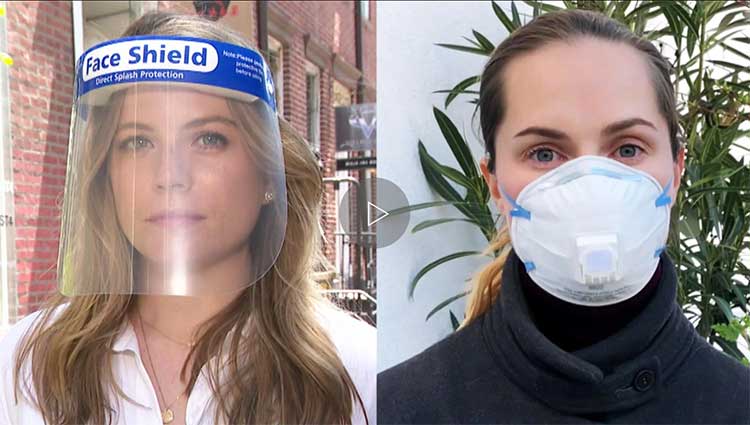
Face shields are made of clear plastic and cover the entire face including the eyes, nose, and mouth.
A simulation (shown in the video above) has demonstrated that using a face shield can reduce your exposure to airborne droplets by up to 96%. In addition, face shields can be easily wiped down and sanitized.
And here is the real kicker: You can wear a face shield and a mask together for even more protection.
Face shields may not work for some roles in a restaurant setting. For example, working with an open flame could compromise the integrity of the plastic. But for most roles, a face shield and a mask is a very safe and effective combination.
Wrapping it All Up on Masks
Restaurant and foodservice workers are going to need to wear masks for the foreseeable future. And there are numerous choices regarding the type of mask to use. If nothing else is available, a reusable cloth mask may suffice. Medical grade N95 respirator masks are probably overkill for restaurant workers and some states have even limited their sale to medical facilities because of their scarcity.
For most applications, a Level 1 rated, disposable, surgical mask is probably the best choice. For even more protection, add a plastic face shield and you should be all set.
Shop All Personal Protective Equipment (PPE)
Read This Next:


